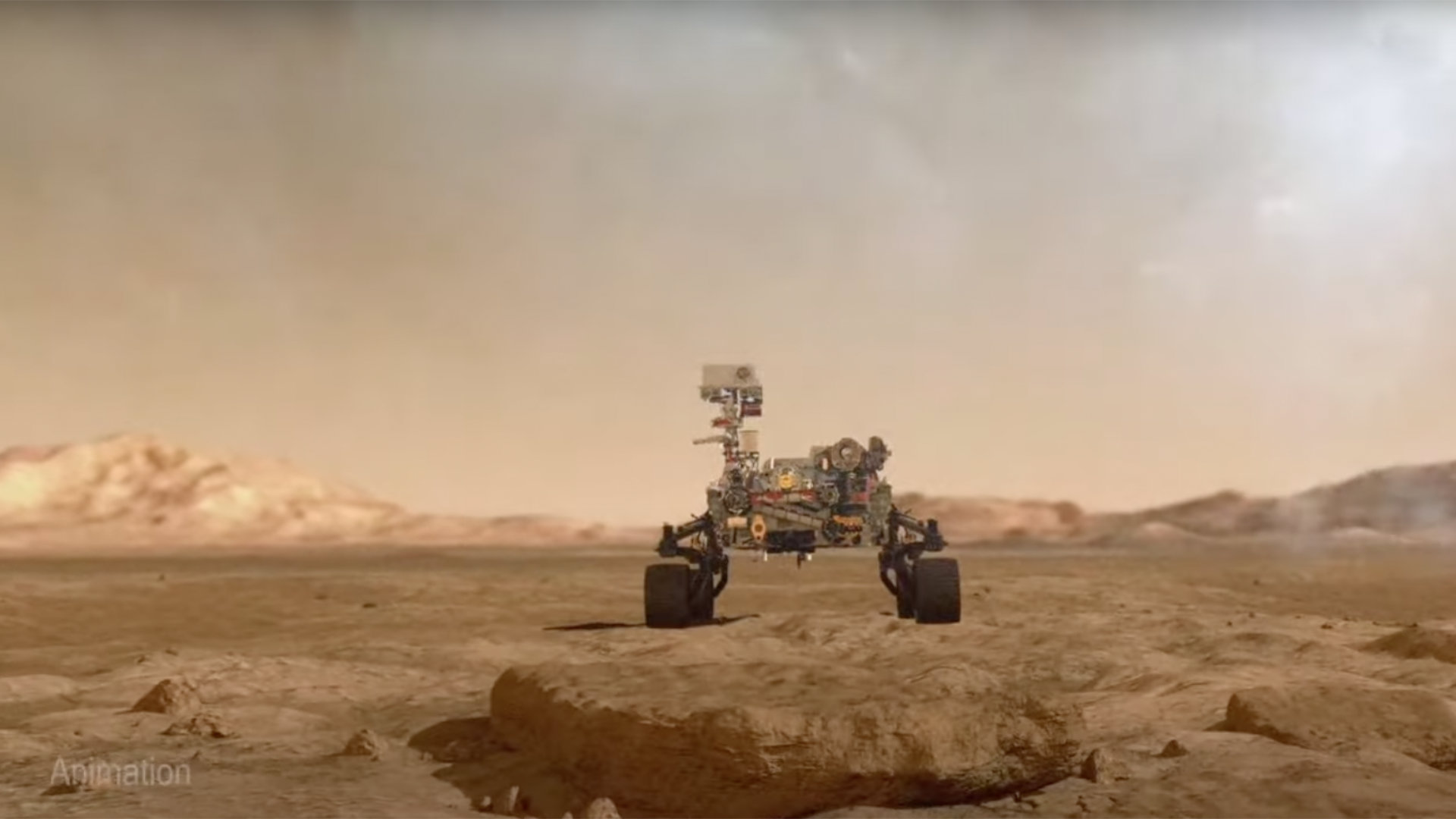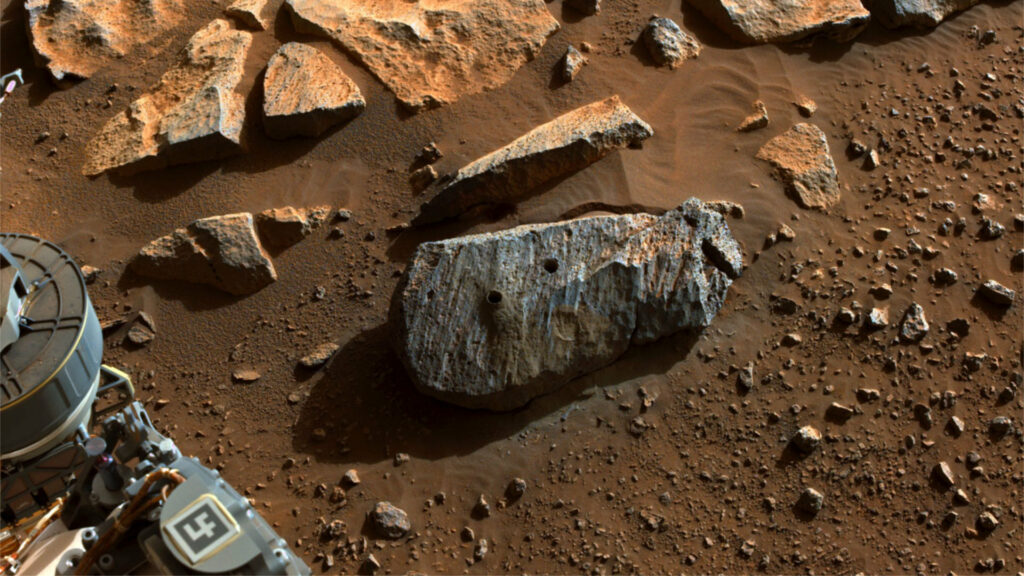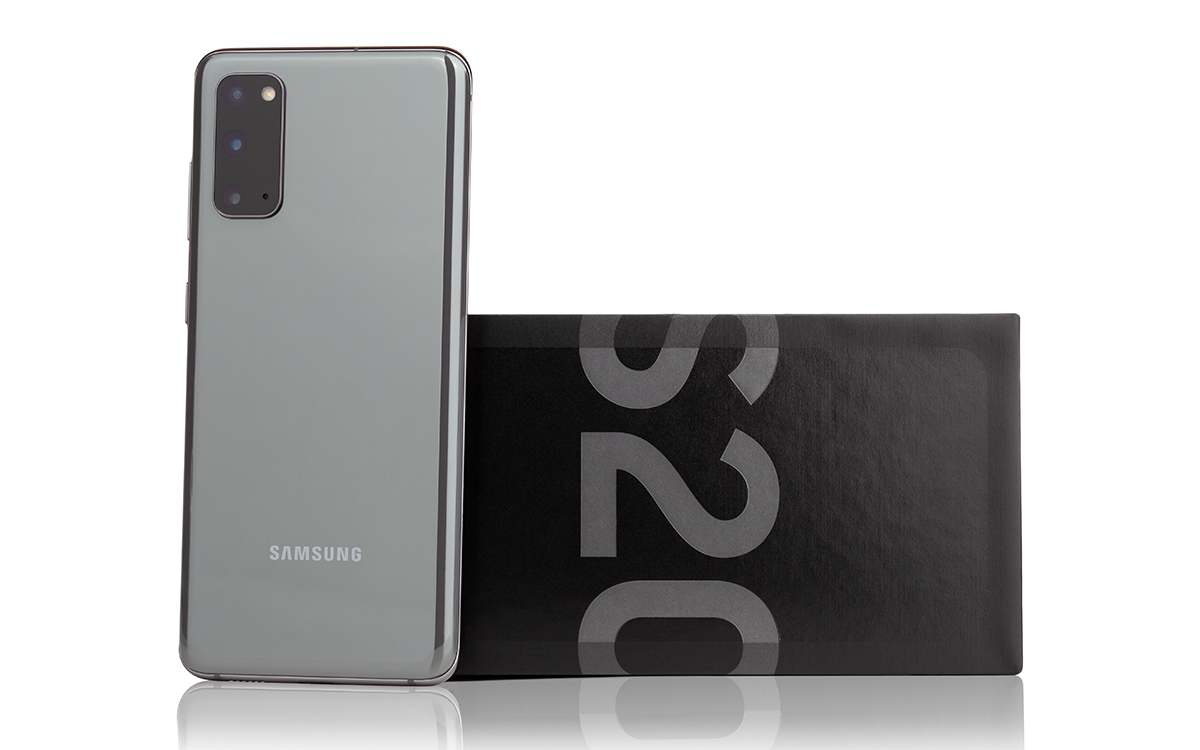
The first samples of Martian soil recovered by Perseverance are rich in information according to the first returns from NASA. The space agency hopes to learn more about the history of the planet with these discoveries.
After a first mishap at the beginning of August, NASA finally managed to collect samples of Martian rock thanks to its Perseverance robot. During a press conference held on September 10, 2021, the US space agency reviewed the progress and objectives of this mission.
In all, two samples were taken on Mars, the first nicknamed “Montdenier” and the second “Montagnac”. According to the first returns from NASA, it could be that these two pieces of Mars are of volcanic origin and that they contain traces of salts.
“Microscopic time capsules”
” These samples are of great value for future laboratory analyzes on Earth. », Explained Mitch Schulte, one of the people in charge of the Martian mission. Montdenier and Montagnac could indeed offer very important information on the Martian environment and its history.

The crystalline minerals are expected to facilitate radiometric dating and offer a way to piece together a partial timeline of what happened at Jezero Crater. ” Each sample can be part of a larger puzzle. By placing them in the right order, scientists get a sequence of the most important events in the history of the crater. Detailed NASA. The possible presence of ancient Martian water bubbles trapped in the saline minerals in the samples is also exciting. These could act as “microscopic time capsules […] offering clues to the ancient climate and habitability of Mars “.
Remember that Perserverance does not have the means to find any evidence of life on Mars on its own. This will have to be done after the samples have returned to earth and the analysis presents many challenges.
And now ?
The samples recovered by Perseverance will initially remain very safe in the robot’s belly before being carefully deposited on Martian soil in order to be recovered later by another mission which will have to bring them back to Earth. In the meantime, Perseverance will give itself a little rest, since from the beginning of October, the teams “will stop controlling their ships for several weeksBecause of the solar conjunction between the Earth and Mars which could scramble the signals.
Then, Perseverance will go without the “Séítah” area, 200 m from its current location, to try to find older rocks that will make it possible to reconstruct the history of the planet Mars even better.



